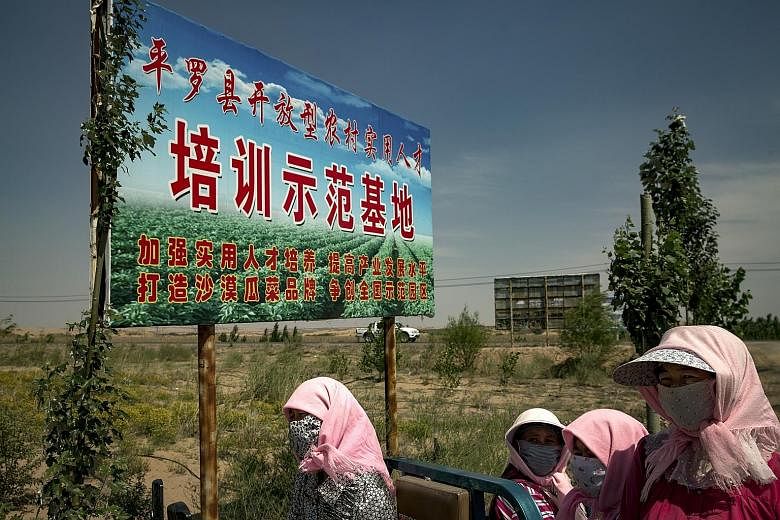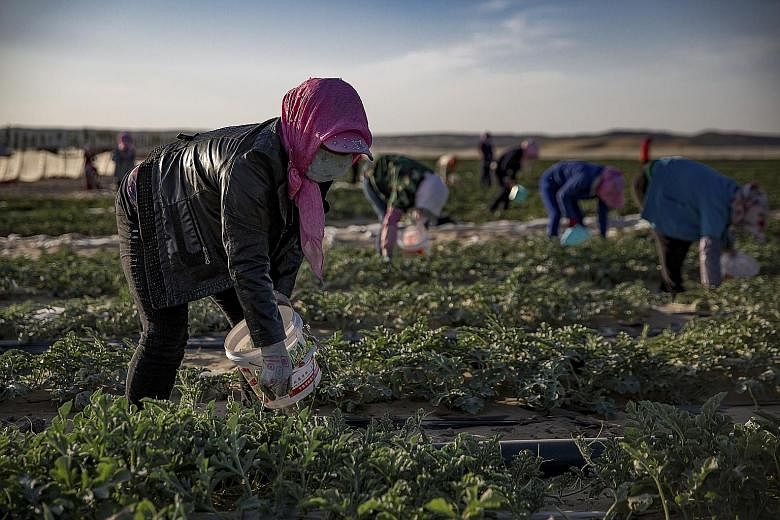MIAOMIAO LAKE VILLAGE (Ningxia Hui Autonomous Region) • Ankle- deep sand blocked the door of their new home. Pushing bicycles through the yard was like wading in a bog.
The "lake" part of Miaomiao Lake Village turned out to be nothing but a tiny oasis more than 1.6km from the cookie-cutter rows of small concrete-block houses.
Dr Ma Shiliang, a village doctor whose family was among some 7,000 Hui Muslims whom the Chinese government had brought to this place from their water-scarce lands in the country's north-west, said officials promised "we would get rich". Instead, these people who once herded sheep and goats over expansive hills now feel like penned-in animals, listless and uncertain of their future.
-
329k
Number of "ecological migrants" relocated from lands distressed by climate change, industrialisation, poor policies and human activity to 161 hastily built villages
"If we had known what it was like, we wouldn't have moved here," said Dr Ma, 41, who, three years on, has been unable to get a job practising medicine in Miaomiao Lake Village or to find other reliable work.
China calls them "ecological migrants": 329,000 people relocated from lands distressed by climate change, industrialisation, poor policies and human activity to 161 hastily built villages.
They were the fifth wave in an environmental and poverty alleviation programme that has resettled 1,140,000 residents of the Ningxia Hui Autonomous Region, a territory of dunes, mosques and camels along the ancient Silk Road.
Mr Han Jinlong, deputy director of migration under Ningxia's Poverty Alleviation and Development Office, said that although the earlier waves were not explicitly labelled ecological migrants, they had also been moved because of the growing harshness of the desert.
It is the world's largest environmental migration project.
What China is doing in Ningxia and a few other provinces hit hard by drought and other natural and man-made disasters is a harbinger of actions that governments across the world, including in the United States, could take as they grapple with climate change, which is expected to displace millions of people in the coming decades.
China has been battered by relentless degradation of the land and worsening weather patterns, including the northern drought.
But mass resettlement has brought its own profound problems, embodied in the struggles of the Ma family and their neighbours.
Dr Ma said each household had to pay a US$2,100 (S$2,900) "resettlement fee" and was promised a plot of land to farm as the families left behind plentiful fields and animals. But those who received plots ended up having to lease them to an agriculture company, and were left with tiny front yards, where the Ma family grows a few chilli plants.
The 11-member family was expected to squeeze into a 580 sq ft (54 sq m), two-bedroom home; like many of the migrants, Dr Ma erected an extra room with white plastic siding in the yard for his parents.
And the officials designing the new homes put toilets in the same room as showers, an affront to the Hui Muslims. Dr Ma dug a pit toilet outside, where the front yard meets the road.
The family lives mainly off the US$12 per day his wife Wang Mei earns in an industrial farm field.
Three of Dr Ma's brothers and a nephew brought a total of 38 family members as part of the resettlement. Another brother, Mr Ma Shixiong, was one of a handful who stayed behind in Yejiahe village, a five-hour drive south, defying the government's orders.
Government officials tore down the homes of the families who left - and punished those who stayed behind by refusing to renovate their houses or build them animal pens, as well as denying them water pipelines and subsidies for raising sheep and cattle.
Mr Wang Lin, another resettled villager, said he and eight family members planned to return to Yejiahe next year if he does not find a job. "No one has moved back yet, but people are talking about it," said the 48-year-old.
"We can farm the land there. Our homes are no longer there, but we can dig into the earth and build a cave home."
NYTIMES


